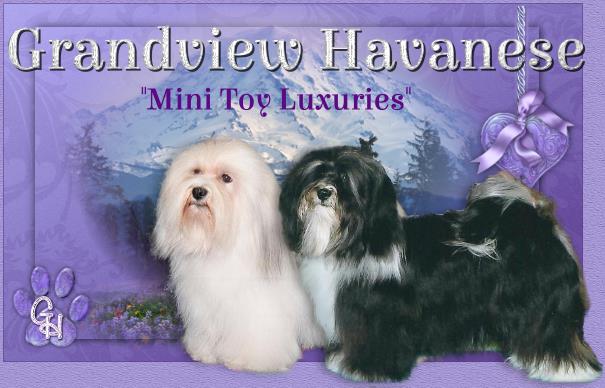History of the Havanese
The Havanese is part of the Bichon canine family of small breeds which probably originated in the Mediterranean area in pre-Christian times. All Bichons are descended from the same bloodlines that produced the Barbet, or water spaniel; the Poodle; the Portuguese Water Dog; and others. The Barbet or “Barbichon” — later shortened to Bichon canine family — consists of several distinct breeds, including the Havanese. In order of popularity in the U.S., these breeds are: 1) Maltese, 2) Bichon Frise, 3) Havanese, 4) Lowchen, 5) Coton de Tulear, and 6) Bolognese. During the days of the Spanish empire, Bichons travelled to Cuba with sea captains who used them as presents for the women of Cuban households. By gaining entry into wealthy Hispanic homes, which were otherwise closed to outsiders, the captains were able to establish lucrative trading relationships with rich Cuban families.
Once in Cuba, the Havanese (Habeneros in Spanish) lived exclusively in the mansions of the highest social class of people. Havanese were never raised commercially or sold but were sometimes given as precious gifts to a friend or someone who had performed a valuable service. Like the Victorian-age wealthy Hispanic women who owned them, the dogs were not seen in the streets or public areas. They lived in the rooms and interior courtyards of their tropical homes and occasionally rode in carriages with their owners.
The Havanese found its way to Europe where it became very popular and was recognized by the European Kennel Club. It was known in England as the “White Cuban.” Queen Anne is said to have admired a troupe of performing dogs that danced to music in almost human fashion. For a while they were used in circuses as trick dogs throughout Europe.
As happened to many other dog breeds, the Havanese’ popularity waned over the course of time.
The nickname “Havana Silk Dog” perfectly fits the Havanese, with his gorgeous long and silky coat. This small breed, the National Dog of Cuba, is friendly and outgoing. Your Havanese puppy is smart and easily trained. He’ll enjoy a romp with the kids and lots of human attention. That cute bundle of fluff will grow up to be an adorable and affectionate companion. As an added plus, Havanese are non-shedding, which makes them a good choice for allergy sufferers.
Additional information as well as the AKC breed standard can be found by clicking here:
http://www.akc.org/dog-breeds/havanese/detail/
Heath Testing is Very Important in Our Breeding Program
The Orthopedic Foundation for Animals provides health test standards for the AKC Havanese breed. AKC Havanese club of America requires that breeding dogs & bitches pass OFA tests in four areas before being recognized as safe and appropriate for breeding. Once the four tests are completed with adequate results, a unique CHIC# is assigned to the dog. You can find a link to the OFA website under our havanese showing the health testing has been completed.
The four required OFA tests for Havanese are:
- BAER – This is a hearing test for congenital deafness
- Patellar Luxation – This is a manual test for dislocated kneecaps (or susceptibility to this malady)
- CERF – This is an annual eye test for observable inherited eye disease
- Hip Dysplasia – This is an X-ray to examine the hip joint. The test result is given with an evaluation rating of Poor, Fair, Good, or Excellent.
Grandview Havanese also performs the following OFA tests on their potential breeding dogs.
- Congenital Cardiac Disease
- Elbow Dysplasia
- Legg-Calve-Perthes Disease
